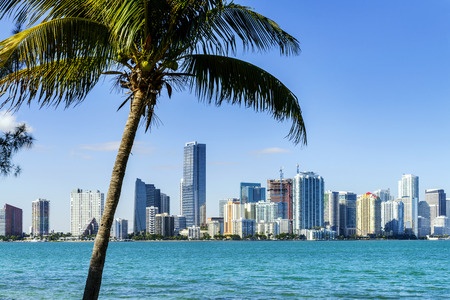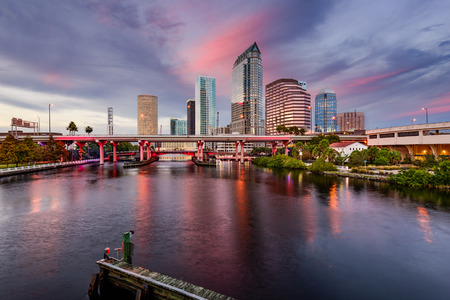In terms of economic impact, few states have been as heavily influenced by immigrant entrepreneurs and foreign-born citizens as Florida. Immigrants comprise an enormous segment, about one-fifth, of Florida’s voting population as of 2012, and the State’s immigrants, primarily Latinos, and Asians possess over $150 billion in purchasing power as of 2014. This is an increase of 544.2% for Latinos, and 882.5% for Asians since 1990, according to the Selig Center for Economic Growth at the University of Georgia.
Florida Immigration Economic Contribution
 Immigrants serve as valuable contributors to Florida’s economy, as the businesses they own employ over 400,000 people and have sales totaling over $90 billion as of 2015. Latino businesses earned $72.6 billion and employed 302,345 people in 2007, and Asian businesses earned $17.3 billion and employed 104,650 people in 2007, according to the U.S. Census Bureau’s Survey of Business Owners. Between 2006 and 2010, the state welcomed 286,144 new immigrant business owners, whose businesses earned a total net income of $13.3 billion, which accounts for 23.8% of Florida’s business income, according to Robert Fairlie of the University of California, Santa Cruz. Immigrant entrepreneurs have played a major part in the post-recession resurrection of the Florida economy, and have greatly benefited the state as a whole.
Immigrants serve as valuable contributors to Florida’s economy, as the businesses they own employ over 400,000 people and have sales totaling over $90 billion as of 2015. Latino businesses earned $72.6 billion and employed 302,345 people in 2007, and Asian businesses earned $17.3 billion and employed 104,650 people in 2007, according to the U.S. Census Bureau’s Survey of Business Owners. Between 2006 and 2010, the state welcomed 286,144 new immigrant business owners, whose businesses earned a total net income of $13.3 billion, which accounts for 23.8% of Florida’s business income, according to Robert Fairlie of the University of California, Santa Cruz. Immigrant entrepreneurs have played a major part in the post-recession resurrection of the Florida economy, and have greatly benefited the state as a whole.
Miami Immigration
For immigrant entrepreneurs seeking to base their company in Florida, Miami and Tampa are excellent choices. As of 2010, 45% of business owners in Miami and 17% in Tampa were immigrants. Miami is the seat of Miami-Dade County and is the most populous municipality in its metropolitan area. According to the U.S. Census Bureau, Miami is the Southeastern United States’ second most populous metropolis, eighth most populous urban area, and the fourth largest urban area in the United States. As of 2010, the area had a population of about 5.5 million.
Miami Industries
Miami is major regional and national leader in numerous industries, including commerce, culture, finance, the arts, international trade, entertainment, and media. In 2012, the World Cities Study Group’s inventory granted Miami the classification of an Alpha−World City in, and in 2010, Miami placed seventh in the United States regarding, commerce, finance, culture, entertainment, fashion, education, and other sectors, and ranked 33rd among global cities. Forbes magazine rated Miami “America’s Cleanest City” in 2008. According to a 2009 UBS study of 73 world cities, in terms of purchasing power, Miami was rated the richest city in the United States and the fifth-richest in the world.
International Connections
Miami embraces its nickname, the “Capital of Latin America,” and is a cultural center for Cuban-Americans and other foreign-born residents and business owners. It is especially accommodating towards Spanish language speakers and is a national hub for the language. This is evident in its role as a major television producer. Miami is home to popular Spanish T.V. channels like Univisión, Telemundo, and UniMÁS which are headquartered there, along with their production studios. The city is also a travel and tourism hub, hosting Miami International Airport and PortMiami, which are two of the nation’s busiest travel hubs and connect the area to the rest of the world. All of these factors combine to make Miami an excellent choice for immigrant entrepreneurs, particularly Spanish speakers, seeking a strong market in which their business can thrive.
Tampa Immigration
 Tampa is a similarly advantageous area for immigrant entrepreneurs. It is the county seat of Hillsborough County and had a population of about 346,037 people in 2011. Tampa is growing rapidly and is part of the Tampa-St. Petersburg-Clearwater, Florida Metropolitan Statistical Area, most commonly referred to as the “Tampa Bay Area.” The four-county area is comprised of about 2.9 million residents, making it the second largest metropolitan statistical area in Florida, and the fourth largest in the Southeastern U.S., after Miami, Washington, D.C., and Atlanta. The Greater Tampa Bay area has over 4 million residents. The Tampa Bay Partnership and U.S. Census data showed an average yearly population growth of 2.47 percent or an increase of about 97,000 residents annually. As of 2012, the estimated population of the Tampa Bay area was 4,310,524 people, and it is anticipated that that number will reach 4,536,854 by 2017.
Tampa is a similarly advantageous area for immigrant entrepreneurs. It is the county seat of Hillsborough County and had a population of about 346,037 people in 2011. Tampa is growing rapidly and is part of the Tampa-St. Petersburg-Clearwater, Florida Metropolitan Statistical Area, most commonly referred to as the “Tampa Bay Area.” The four-county area is comprised of about 2.9 million residents, making it the second largest metropolitan statistical area in Florida, and the fourth largest in the Southeastern U.S., after Miami, Washington, D.C., and Atlanta. The Greater Tampa Bay area has over 4 million residents. The Tampa Bay Partnership and U.S. Census data showed an average yearly population growth of 2.47 percent or an increase of about 97,000 residents annually. As of 2012, the estimated population of the Tampa Bay area was 4,310,524 people, and it is anticipated that that number will reach 4,536,854 by 2017.
Tampa Industries
Tampa is a hub for several major industries, including retail, finance, healthcare, national defense, professional sports, real estate, and, notably, shipping by land and sea. The downtown area is growing rapidly, and the Tampa Downtown Partnership began development on 20 residential, hotel, and mixed-use projects as of April 2007. City leaders hope that this and similar developments will make the area a 24-hour neighborhood. The Tampa Business Journal named the city the number two city for real estate investment in 2014. Tampa is an excellent location for immigrant entrepreneurs whose companies utilize shipping by air and sea. Its port is the seventh largest in the U.S. and Florida’s largest tonnage port, handling nearly half of all seaborne commerce that passes through the state.
Immigration in Tampa Diversity
According to a 2009 Pew Research Center study, Tampa is the fifth most popular American city, based on where people want to live, and in 2008, Forbes named it the 5th best outdoor city. Like Miami, the area is heavily Spanish-speaking, with about 17.8 of the population speaking it as their primary language. In 2010, over 23.1% of the population was Hispanic or Latino. Local businesses have adjusted accordingly, preferring bilingual employees, and an immigrant entrepreneur who already has this skill can expect to enter the market with a significant advantage. The Tampa Bay area is increasingly becoming a hub for Middle Eastern immigrants and refugees. These new entrants into the community will drive a need for diversity, and companies that offer products and services that cater to their needs are likely to thrive in the coming years.
Florida Immigration
Florida values its immigrant entrepreneurs and offers them a growing economy and an environment ripe with opportunity and diversity for those looking for an exceptional location to set up their business. Immigrant entrepreneurs who choose Florida, particularly the Miami and Tampa areas, will be met with communities open to new products and services, and who are accepting of all cultural backgrounds.
About the JDC Consultancy U.S. State Featurettes
Moving to the United States to make a new start as an immigrant entrepreneur is a challenging process. Visa applicants face a huge number of critical decisions before submitting their visa application, one of the most important of which is deciding which State will offer the best environment for their business to grow and thrive, and provide the optimal environment for their families. Each State has its opportunities and industry specializations, and a company that sees tremendous growth in one State might not see the same results in another.

To help its clients decide which State will serve as the most advantageous home base, both for their businesses and their families, and further streamline the visa application process, JDC Consultancy publishes brief overviews of what each State has to offer its immigrant entrepreneurs. These featurettes showcase each State’s strengths and provide valuable insight and statistics to help immigrant entrepreneurs make the all-important decision of which State they, and their businesses, should call home.

